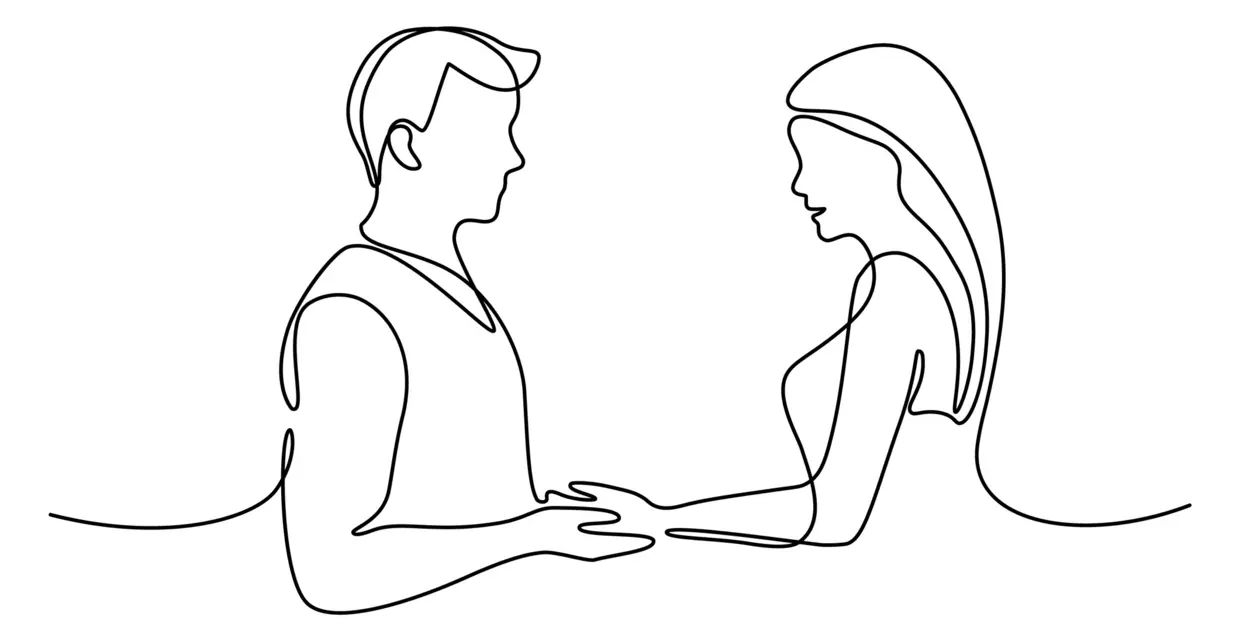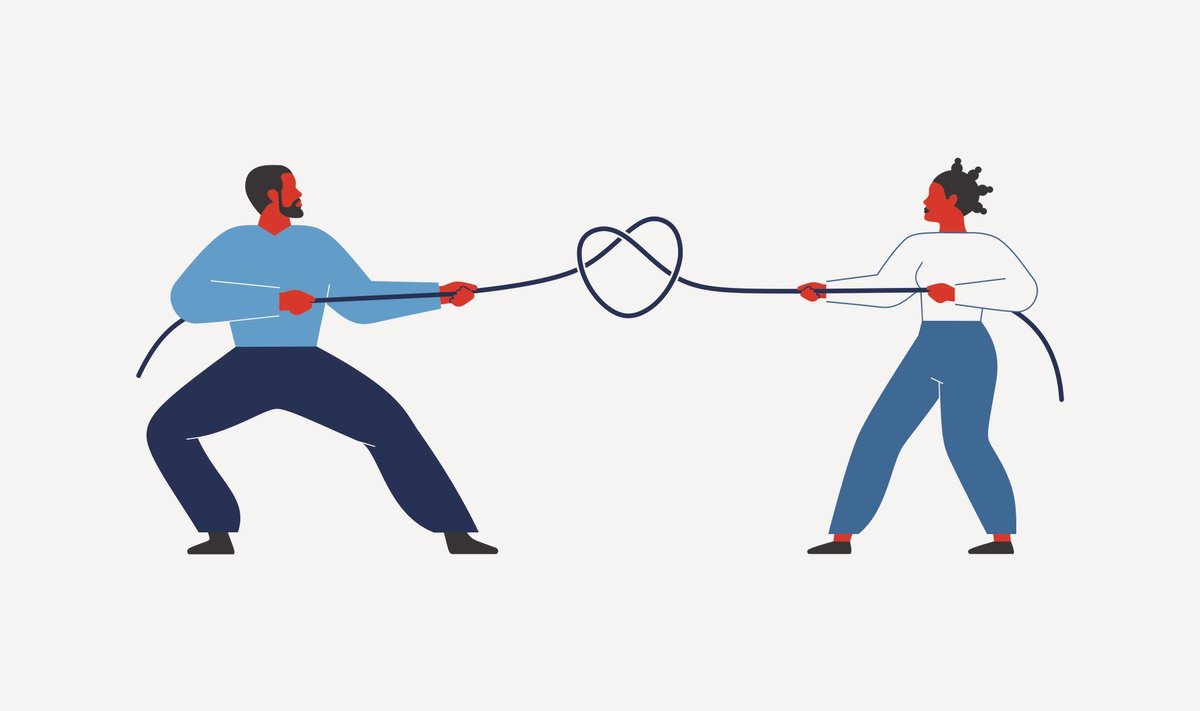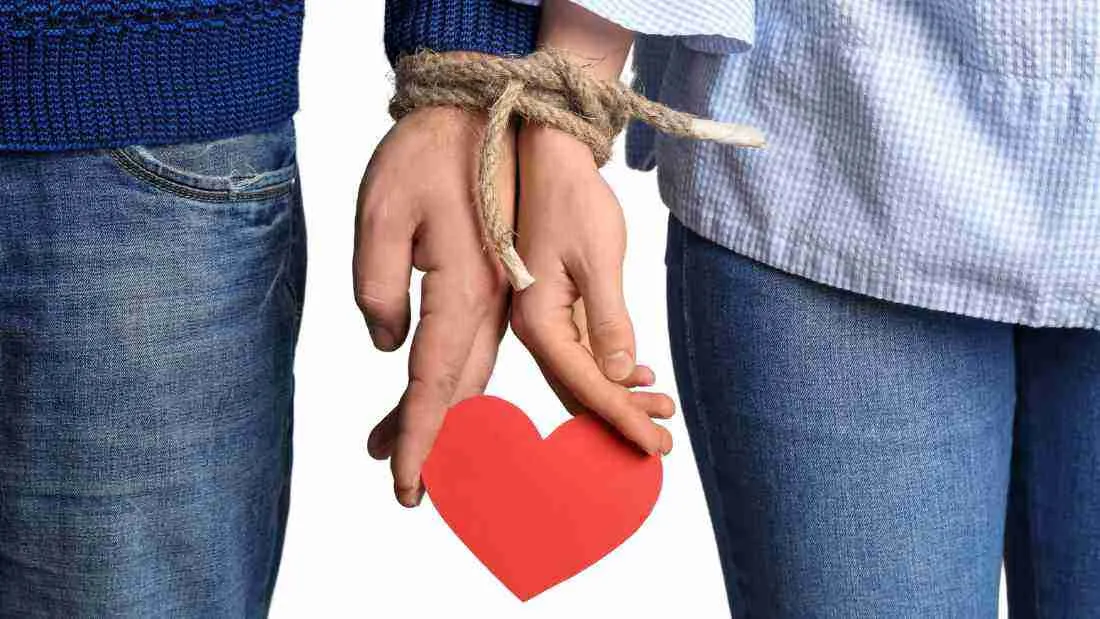What is Trauma Bonding? Signs, Causes, Risks, and How to Heal
Trauma bonding is a psychological response that occurs when a person develops a deep emotional attachment to someone abusive, manipulative, or toxic. This bond is formed through a cycle of abuse and intermittent positive reinforcement, where moments of kindness, affection, or apology follow instances of mistreatment.
Over time, the victim becomes emotionally dependent on the abuser, making it difficult to leave the relationship despite the ongoing harm.
Trauma bonding often occurs in romantic relationships, but it can also be present in family dynamics, friendships, or professional environments where manipulation and control are at play.
Because of the intense emotional highs and lows, trauma bonds can feel like deep love or connection, making them incredibly difficult to break.
7 Signs and Symptoms of Trauma Bonding

Recognising trauma bonding can be challenging, especially when emotions cloud judgment.
Here are some key signs that may indicate a trauma bond:
1. Feeling Emotionally Dependent on the Abuser
Despite experiencing pain, manipulation, or abuse, you feel unable to detach yourself emotionally. The idea of leaving the relationship may cause deep anxiety or distress.
2. Justifying or Minimizing the Abuse
You make excuses for the abusive person’s behaviour, believing that they “didn’t mean it” or that they are capable of change. You may downplay the severity of their actions.
3. Walking on Eggshells
You feel constantly anxious, trying to avoid conflict, criticism, or punishment from your partner.
You may feel the need to alter your behaviour to keep them happy.
4. A Cycle of Intense Highs and Lows
Your relationship feels like an emotional rollercoaster—there are periods of affection, love, and apologies, followed by neglect, criticism, or abuse. These highs keep you hopeful that things will get better.
5. Isolation from Friends and Family
The abusive partner may discourage or forbid you from seeing loved ones, making you feel alone and dependent on them. Over time, you may lose your support system.
6. Fear of Leaving
Even if you recognise the toxic patterns, you feel trapped or believe that you won’t find anyone else who will love or understand you. The fear of being alone may outweigh the pain of staying.
7. Feeling Grateful for Small Acts of Kindness
You sincerely appreciate small gestures of love or kindness from your abuser despite the ongoing harm.
Their moments of affection reinforce the belief that they truly love you, keeping you emotionally invested.
What Causes Trauma Bonding?

Trauma bonding does not happen overnight. It is formed through repeated patterns of manipulation, emotional abuse, and psychological conditioning.
Several factors contribute to the development of a trauma bond:
Intermittent Reinforcement
Abusers often alternate between love and cruelty, causing the victim to crave their approval. These unpredictable cycles create emotional dependency, making it difficult to leave.
Childhood Trauma and Attachment Issues
People who have experienced neglect, emotional abuse, or inconsistent caregiving in childhood may be more susceptible to trauma bonding.
If love and pain were linked in early life, the brain might normalize this pattern in adult relationships.
Low Self-Esteem and Emotional Vulnerability
Those who struggle with self-worth, insecurity, or past trauma may cling to toxic relationships out of fear of abandonment. The abuser often reinforces feelings of unworthiness, making the victim believe they do not deserve better.
Psychological and Biological Responses
The brain releases dopamine and oxytocin during moments of love and affection, creating feelings of pleasure and attachment. When these positive emotions follow periods of abuse, the victim becomes chemically bonded to the abuser, similar to an addiction.
Social Conditioning and Cultural Influences
Society often romanticizes “love conquers all” narratives, reinforcing the belief that staying in challenging relationships is noble or admirable.
Many people stay in toxic relationships because they hope their love will “fix” their partner.
Why Do Abusers Use Trauma Bonding?

Abusers use trauma bonding to create emotional dependency and maintain control. By alternating between cruelty and kindness, they confuse victims, making it harder to recognise abuse and leave.
They manipulate love, linking pain with affection, so victims believe suffering is every day. Intermittent reinforcement—moments of kindness after mistreatment—gives victims false hope, making them more forgiving. Abusers also instil fear and helplessness, convincing victims they have no better options.
Isolation is another tactic—abusers cut off support systems, forcing victims to rely solely on them. Over time, this traps victims in a cycle of abuse where they feel unable to escape.
Abusers use trauma bonding as a powerful tool for control, and they often enjoy the process because it reinforces their dominance, manipulates the victim’s emotions, and ensures the victim stays attached to them despite the abuse. This method keeps the victim emotionally dependent, making it difficult for them to leave.
For Abusers, Trauma Bonding Gives Them Power and Control
Abusers crave power over others. Trauma bonding allows them to control their victim’s emotions, thoughts, and actions. By alternating between love and cruelty, they manipulate the victim’s reality, keeping them confused and submissive.
The more dependent the victim becomes, the more influential the abuser feels.
It Creates Emotional Addiction in the Victim
Through intermittent reinforcement, the abuser ensures the victim clings to the relationship, desperately waiting for the next moment of kindness. The cycle of abuse followed by affection triggers a chemical addiction, making the victim crave the abuser’s approval.
Abusers enjoy this because it makes their victim loyal, emotionally trapped, and less likely to leave.
It Feeds Their Ego and Sense of Superiority
Many abusers have narcissistic or sociopathic traits, finding pleasure in watching someone suffer yet still staying devoted.
Knowing they can mistreat someone and still receive love, forgiveness, and loyalty feeds their ego and reinforces their superiority.
It Allows Them to Avoid Consequences
Trauma bonding makes victims defend and justify their abuser’s actions, reducing the chances of accountability or legal consequences.
If the victim believes the abuse is their fault, they are less likely to seek help, speak out, or leave. This allows the abuser to continue their behaviour without fear of repercussions.
It Ensures the Victim Stays in the Relationship
Abusers fear losing control, and trauma bonding ensures the victim stays hooked. Even if the victim tries to leave, the emotional dependency makes them doubt their decision, leading to reconciliation and repeated cycles of abuse.
Abusers enjoy the security of knowing their victim will keep coming back.
5 Risks of Trauma Bonding

Trauma bonding can have severe emotional, psychological, and even physical consequences if left unaddressed. The longer the bond continues, the harder it becomes to break free. Some risks include:
1. Emotional and Psychological Damage
Staying in an abusive relationship can lead to anxiety, depression, PTSD, and chronic self-doubt. Over time, you may begin to internalize the abuser’s negative words, believing that you are unworthy of love or respect.
2. Loss of Identity and Independence
Many victims lose their sense of self as they become consumed by the relationship. Their hobbies, interests, and goals may take a backseat as they prioritize pleasing their abuser.
3. Physical Harm
In extreme cases, trauma bonding occurs in physically abusive relationships, where the victim remains despite violence. This can put their safety and well-being at serious risk.
4. Difficulty Trusting Future Relationships
Survivors of trauma bonding often struggle with trust and intimacy in future relationships. The damage caused by manipulation and betrayal can make it challenging to open up to healthy, loving partners.
5. Repeating the Cycle in Future Relationships
Without proper healing, individuals who have experienced trauma bonding may unknowingly seek out similar toxic relationships.
The brain becomes conditioned to mistake trauma for love, leading to repeated patterns of unhealthy attachment.
Can Trauma Bonding Work?

Many people wonder if a trauma-bonded relationship can evolve into something healthy. While people can change, the reality is that most trauma-bonded relationships are built on control and manipulation, not genuine love or respect.
For a trauma-bonded relationship to become healthy, the abusive partner must take full accountability for their actions, commit to therapy, and demonstrate long-term change. However, in most cases, abusers do not change unless they have a strong personal desire to do so.
If you are experiencing trauma bonding, the best path forward is healing and self-recovery—not trying to fix a toxic relationship.
How to Overcome Trauma Bonding in Relationships?

Trauma bonding can make leaving an unhealthy relationship feel nearly impossible. The deep emotional attachment formed through cycles of abuse, manipulation, and intermittent affection creates a strong psychological dependence that can be difficult to break.
Acknowledge the Trauma Bond
The first and most crucial step in overcoming trauma bonding is recognising and accepting that it exists.
Many individuals in toxic relationships struggle with denial, hoping that things will improve or blaming themselves for their partner’s behaviour.
Understanding that your emotional attachment has been reinforced by cycles of abuse and affection is essential in breaking free.
Ask yourself:
- Do I feel trapped in this relationship but unable to leave?
- Do I minimize or justify my partner’s abusive behaviour?
- Do I feel a sense of relief or happiness after my partner shows me affection, even after they have hurt me?
- Do I fear being alone more than I fear being mistreated?
Recognising that you are in a trauma bond is not a sign of weakness—it is a sign of self-awareness and the first step toward healing.
Cut Off Contact (If Possible) & Set Boundaries
One of the most effective ways to break a trauma bond is to cut off all communication with the abusive partner. Continuing contact allows the cycle of emotional manipulation to persist, making it harder to detach. If you can, implement no-contact by blocking their number, avoiding their social media, and removing reminders of them from your life.
However, in cases where cutting off contact is not possible (such as co-parenting or working together), strict boundaries must be set. Keep interactions limited, direct, and emotionally neutral. Avoid engaging in personal conversations or seeking emotional validation from them. The less emotional energy you give them, the weaker the trauma bond will become.
Allow Yourself to Grieve the Relationship
Even though the relationship was toxic, it is still customary to feel grief, sadness, or longing after leaving. The bond formed was real to you, even if it was built on manipulation. Suppressing emotions can make the healing process more difficult.
Instead, allow yourself to:
- Mourn the loss of the relationship and the hope that it would improve.
- Accept that love should not come at the cost of your emotional or physical well-being.
- Understand that missing them does not mean you should go back.
Healing is not linear—some days will be easier than others, but every step forward is a step toward freedom and self-respect.
Rebuild Your Self-Esteem and Identity
Trauma bonding often strips individuals of their self-worth and independence. Over time, a toxic partner may have convinced you that you were unworthy of love, incapable of making decisions, or that you needed them to feel whole.
Rebuilding your self-esteem is crucial in breaking the cycle of dependence.
Ways to rebuild self-worth:
- Engage in activities and hobbies that bring you joy.
- Surround yourself with positive and supportive people.
- Set personal goals that give you a sense of accomplishment.
- Challenge negative self-beliefs with affirmations and self-compassion.
Remind yourself daily: You are enough, you deserve respect, and you are capable of healing.
Challenge & Rewire Your Thoughts
Trauma bonding often involves distorted thinking patterns, where you may justify mistreatment or believe you cannot function without the abusive partner. Cognitive Behavioral Therapy (CBT) techniques can help you challenge these unhealthy thought patterns.
- Recognise False Beliefs – Question thoughts like “Maybe I deserved it” or “They hurt me because they love me.” These are emotional manipulations, not truths.
- Reframe Your Perspective – Instead of thinking, “I can’t live without them,” replace it with “I am learning to live for myself.”
- Use Journaling – Writing down your thoughts and feelings can help you process emotions and recognise unhealthy patterns.
The brain is adaptive—with time and effort, you can rewire your thought processes to embrace healthier beliefs.
Seek Professional Support & Relationship Counselling
Breaking free from a trauma bond can be incredibly difficult without professional guidance, mainly if the relationship has caused deep emotional wounds. Relationship counselling or individual therapy can help you:
- Identify the root cause of your attachment and dependency.
- Develop coping strategies to manage emotional withdrawal.
- Build healthier relationship patterns moving forward.
- Address past traumas that may have contributed to your susceptibility to trauma bonding.
Gold Coast Counsellor Lee Calleja from Chirn Park Health Group offers relationship counselling and trauma recovery support through online video consultations or in-chair sessions at the Southport Clinic. Seeking therapy can help you gain the clarity, confidence, and emotional resilience needed to move forward.
Click Here to Make a Counselling Appointment
Focus on Self-Care & Emotional Healing
Healing from trauma bonding requires nurturing your mental, emotional, and physical well-being. Engaging in self-care routines helps regulate your emotions and rebuild your sense of self.
Consider:
- Meditation & Mindfulness – Practicing grounding techniques can help reduce anxiety and keep you present.
- Exercise & Healthy Nutrition – Physical activity releases endorphins, improving mood and self-esteem.
- Creative Outlets – Art, music, and writing can be powerful tools for processing emotions.
- Affirmations and Positive Reinforcement: Remind yourself daily that “I am worthy of love, respect, and happiness.”
Healing takes time, but prioritizing self-care and self-compassion will help you regain control over your emotions and life.
Surround Yourself with a Supportive Community
Abusive relationships and trauma bonding often lead to isolation, making it even harder to leave. Reconnecting with supportive friends, family, or support groups can provide the encouragement needed to heal.
- Reach out to trusted loved ones who understand and respect your journey.
- Join support groups for survivors of trauma bonding or toxic relationships.
- Surround yourself with people who uplift and empower you rather than those who doubt your decision to leave.
The more you reinforce positive, healthy connections, the weaker the trauma bond becomes.
Be Patient with Yourself
Breaking free from trauma bonding is not easy, and healing doesn’t happen overnight. There will be moments of doubt, sadness, and even temptation to return—but these do not mean you are failing.
Each small step forward is a victory. Every moment of self-love is an act of strength. Be kind to yourself, celebrate your progress, and remember that you are rebuilding a life free from control and manipulation.
How Personal and Relationship Counselling Can Help
Healing from trauma bonding takes time, self-awareness, and professional support. Relationship counselling can be a powerful tool for breaking free from toxic attachments and rebuilding self-worth.
A professional therapist provides a safe, non-judgmental space to explore your emotions and recognise unhealthy patterns. Therapy can help you:
- Identify and understand trauma bonding – Recognising the signs of trauma bonding is the first step toward healing. A therapist helps you acknowledge the manipulation and control dynamics in your relationship.
- Rebuild self-esteem and confidence – Many victims of trauma bonding struggle with feelings of unworthiness. Therapy focuses on self-empowerment and healing, helping you regain independence and self-love.
- Develop healthy relationship boundaries – Counselling helps individuals establish clear, firm boundaries in relationships, preventing them from falling into toxic patterns again.
- Learn coping strategies for detachment – A therapist can guide you through techniques such as mindfulness, self-care practices, and emotional regulation to help break the trauma bond.
- Navigate the healing process – Leaving a trauma-bonded relationship can be emotionally challenging. Therapy provides guidance, emotional support, and tools to help individuals move forward with strength.
If you are struggling with trauma bonding, seeking professional help is a crucial step toward healing. Gold Coast Counsellor Lee Calleja at Chirn Park Health Group in Southport offers relationship counselling for those navigating toxic relationships, trauma bonds, and emotional recovery.
Whether through online video consultations or in-person sessions in Southport, professional support can help you break free and reclaim your life.
Contact a Counsellor Near Me to Start a Journey Towards Healing









